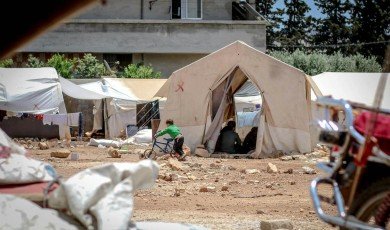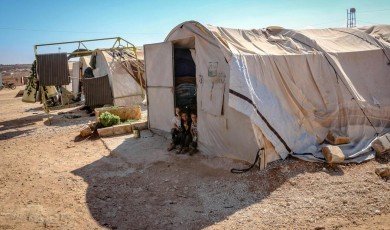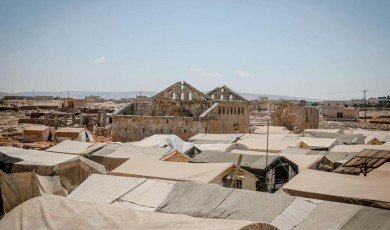
Understanding the real experiences of people on the move has always been difficult. Stories are scattered across borders, languages, and platforms, while official statistics often lag behind reality. This is where data-driven technologies step in, not as a replacement for human stories, but as a powerful lens that can reveal hidden patterns, overlooked needs, and systemic barriers that migrants face every day.
Modern AI tools can collect, organize, and analyze massive volumes of information that no individual researcher or organization could handle alone. When thoughtfully designed and ethically deployed, they help advocates, NGOs, journalists, and policymakers see beyond headlines to the day‑to‑day struggles that too often remain invisible.
1. Mapping Migration Routes to Expose Hidden Risks
One of the most powerful contributions of AI-driven analysis is the ability to map migration routes in real time. By processing GPS data, satellite images, news reports, and crowd-sourced updates, technology can reveal where people are traveling, where they are getting stuck, and which paths are becoming more dangerous.
This kind of mapping can:
- Identify border zones where people frequently go missing or are detained.
- Detect changing patterns in routes as policies or conflicts shift.
- Highlight areas lacking basic services such as food, shelter, or medical aid.
For humanitarian groups, this information is crucial. It tells them where to focus their resources, how to position emergency teams, and when to alert local authorities or international bodies to emerging crises.
2. Analyzing News and Social Media to Detect Crisis Hotspots
Natural language processing systems can scan thousands of posts, articles, and reports in multiple languages to identify early signs of trouble affecting people on the move. Mentions of border closures, mass arrests, or sudden changes in asylum policy can be detected as soon as they appear.
Key insights that emerge include:
- Rising hostility or xenophobic rhetoric in particular regions.
- New legal restrictions that could trap people in unsafe conditions.
- Sudden surges of arrivals to specific cities or camps.
Instead of reacting weeks or months later, organizations can prepare faster: updating legal guidance, adapting communication strategies, and alerting local partners to potential backlash or unrest.
3. Turning Testimonies into Actionable Evidence
Migrants often share their experiences in interviews, text messages, voice notes, and social media posts. Individually, each story is powerful but limited; collectively, they can reveal structural problems that repeat across borders and systems.
Automated transcription and language analysis can:
- Extract recurring themes, such as wage theft, violence, or abuse in detention.
- Group testimonies by location, employer, or authority involved.
- Spot patterns of discrimination that might otherwise be dismissed as “isolated incidents.”
This transforms personal accounts into a body of evidence that advocacy groups and lawyers can use to push for investigations, policy changes, or court action, while still centering the voices of the people who lived these experiences.
4. Revealing Gaps in Access to Services
Many basic services—healthcare, education, housing support, legal aid—are unevenly available along migration routes and in host communities. By analyzing location data, service directories, NGO reports, and user feedback, technology can help identify exactly where the gaps are.
These insights might show:
- Border towns where thousands of people wait without shelter.
- Urban neighborhoods that host large migrant populations but have almost no legal aid clinics.
- Regions where language interpretation is virtually nonexistent in hospitals or schools.
With a clearer picture, funders and NGOs can make more transparent, data-backed decisions about where to open new centers, what languages to prioritize, and which communities need immediate support.
5. Tracking Policy Impacts Over Time
Laws and policies that regulate movement, asylum, and work permits change constantly. Their effects, however, are not always immediately visible. Analytical systems can link policy shifts to changes in migration routes, detention numbers, or humanitarian needs over months and years.
This approach can:
- Show whether stricter border controls actually reduce crossings or simply push people to more dangerous routes.
- Measure how new work permit schemes influence exploitation and informal labor.
- Reveal whether integration policies correlate with better employment or education outcomes.
By grounding debates in evidence rather than assumptions, researchers and advocates can challenge harmful narratives and propose alternatives that protect both rights and safety.
6. Highlighting Barriers in Digital and Information Access
Information inequality is one of the least visible but most significant challenges. People on the move often depend on smartphones but lack reliable access to official updates, legal information, or trustworthy guides.
Technology can help expose:
- Where official information is not available in relevant languages.
- Which groups (by age, gender, or origin) are most affected by misinformation.
- How often critical updates—like changes in asylum rules—fail to reach those who need them.
With this knowledge, organizations can design targeted communication strategies, build multilingual platforms, and partner with local media to close the information gap and reduce vulnerability to scams and exploitation.
7. Making Donor and Policy Decisions More Transparent
Where money and attention flow often depends on headlines and politics rather than actual need. Analytical dashboards and data visualizations serve as a counterweight, making it easier to see which regions or communities are chronically underfunded despite high levels of risk.
Transparent data can:
- Show mismatches between resources provided and people affected.
- Highlight long-term crises that rarely appear in mainstream news.
- Hold institutions accountable for promises, funding pledges, and policy commitments.
When decisions are traceable and backed by verifiable data, it becomes harder to ignore the people and places that have been sidelined for years.
8. Balancing Insight with Ethics and Privacy
While the analytical power of modern systems is significant, it also carries risks. Data about people on the move is extremely sensitive. If misused, it could expose them to surveillance, detention, or targeted violence.
Any initiative using these technologies should:
- Minimize personal data collection and avoid unnecessary identifiers.
- Use strong encryption and secure storage to protect those whose information is included.
- Involve affected communities in decisions about what data is collected and how it is used.
- Be transparent about methods, limitations, and safeguards.
Ethical frameworks are not optional; they are the foundation that determines whether this technology supports or harms the people it aims to help.
Conclusion: From Invisible Struggles to Visible Evidence
Powerful analysis and pattern recognition are reshaping how the world understands mobility, risk, and rights. Instead of relying solely on partial reports and delayed statistics, organizations can now see emerging dangers, structural barriers, and forgotten communities with far greater clarity.
When this technology is built responsibly and placed in the hands of advocates, journalists, and frontline organizations, it becomes more than a technical achievement. It turns scattered experiences into visible evidence, strengthens demands for accountability, and supports practical solutions that respond to real needs. Used wisely, these tools help ensure that the struggles of people on the move are not just acknowledged, but acted upon.






